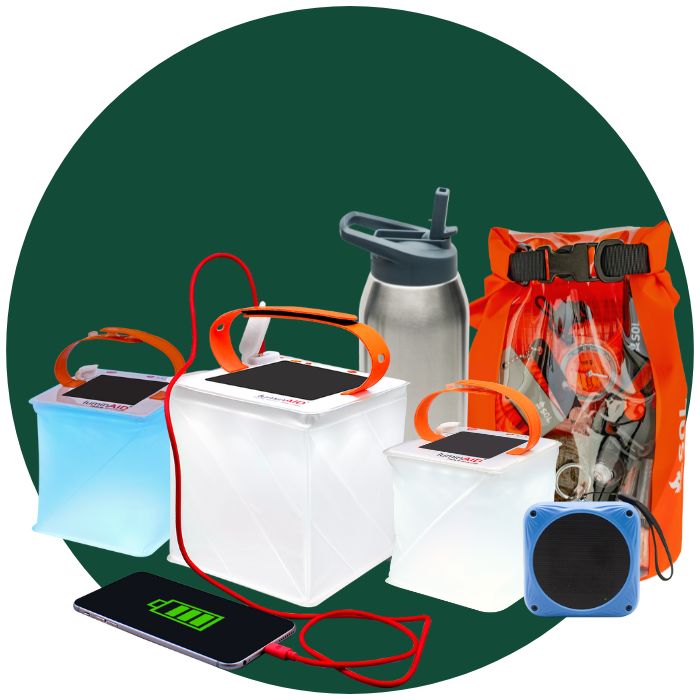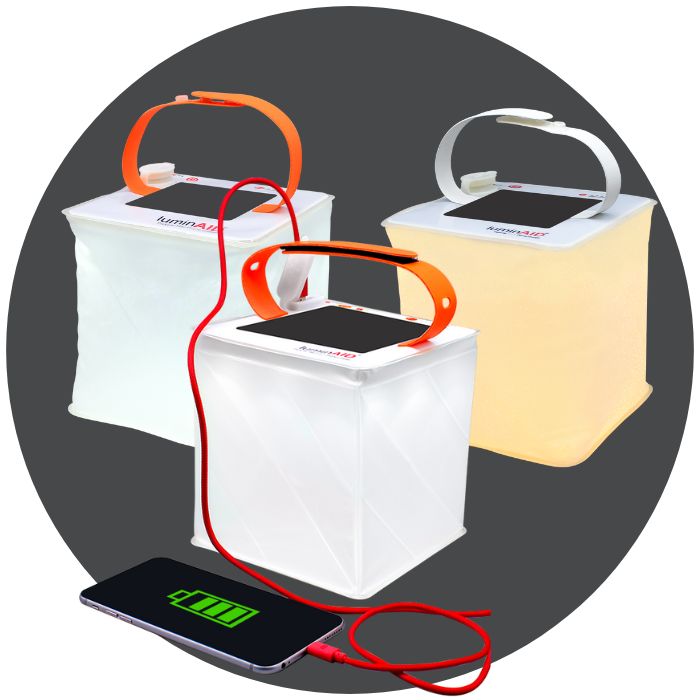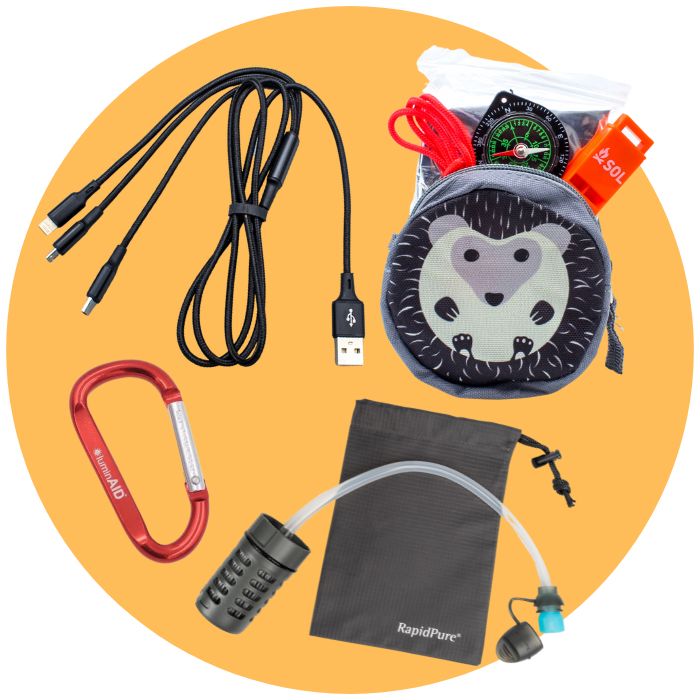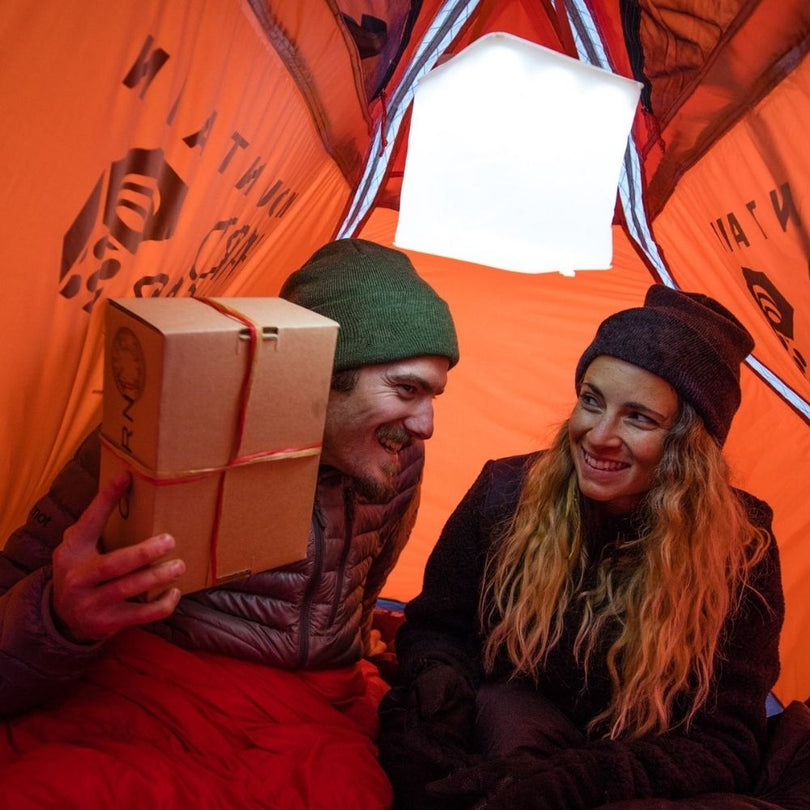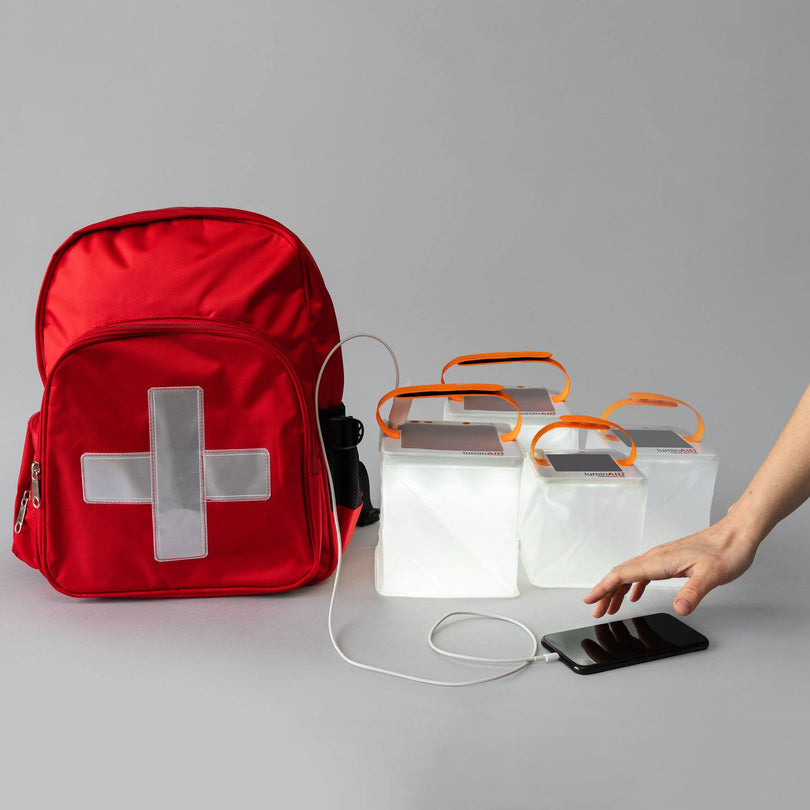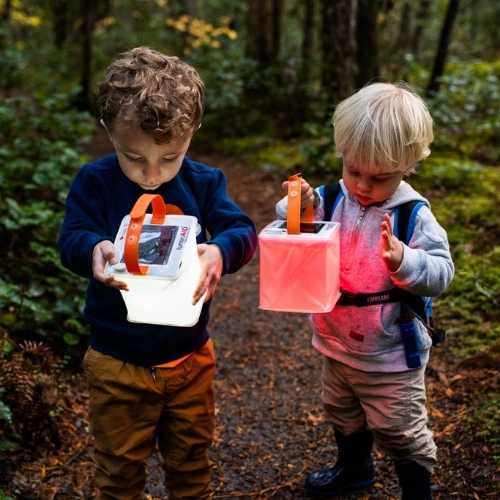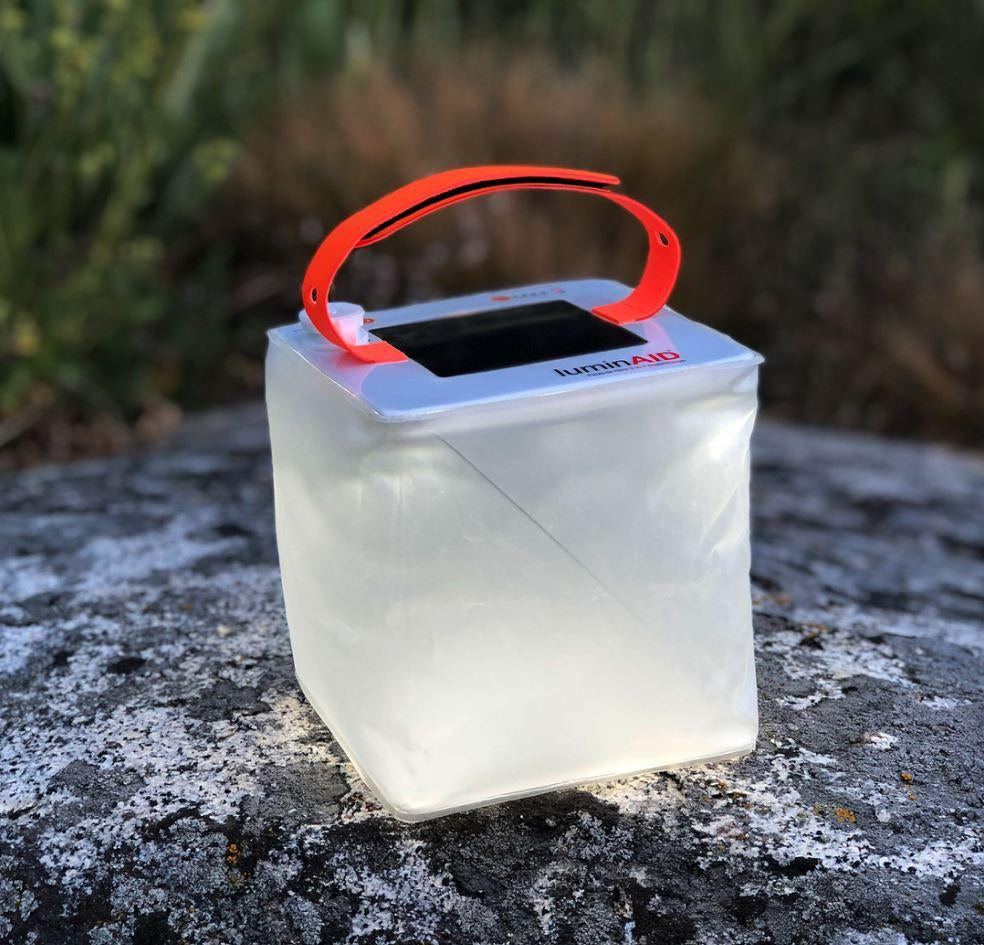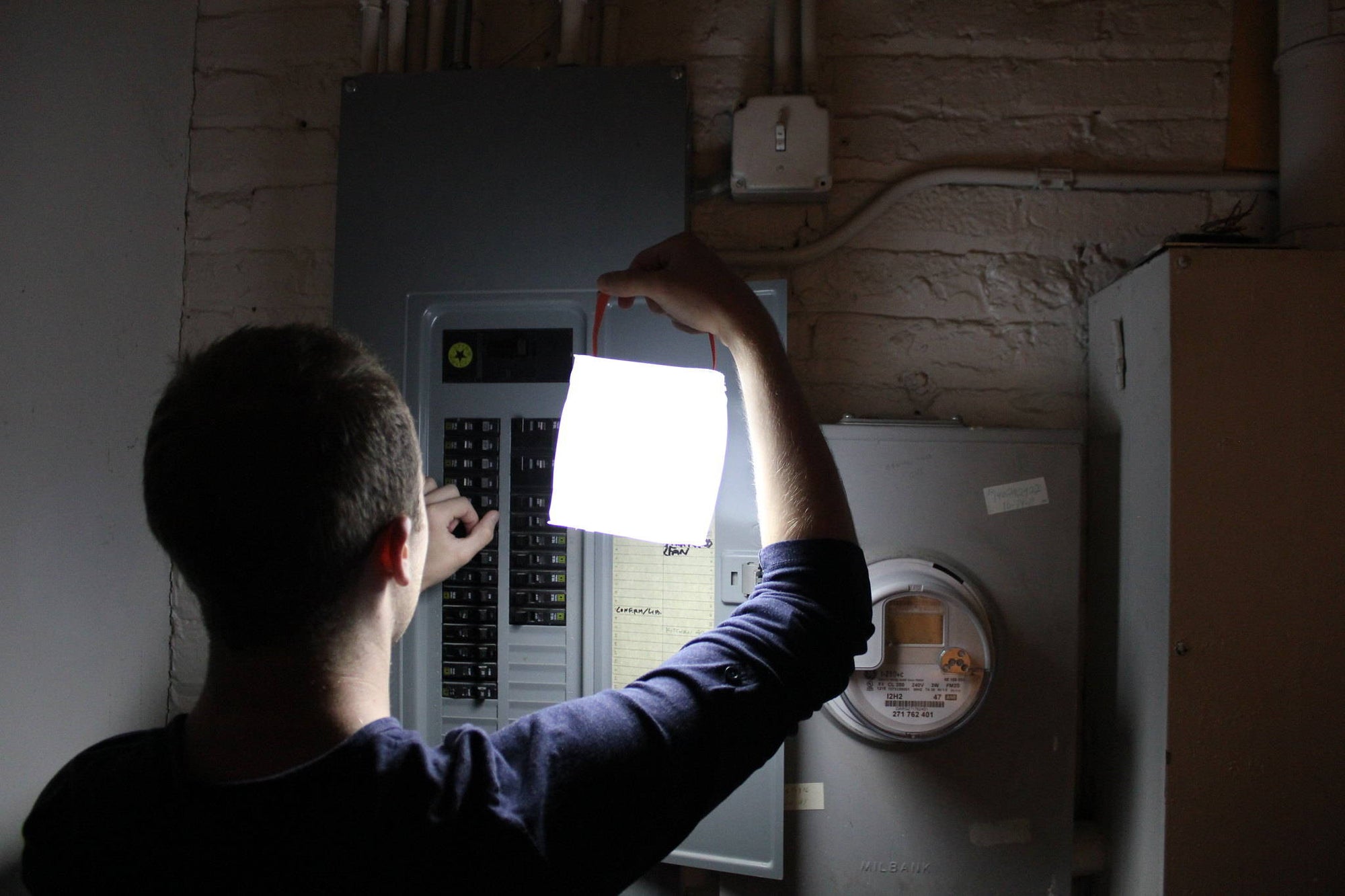Here at LuminAID, we have an ethos of constant improvement. We strive to ensure that every light that leaves our hands meets the exacting usability and quality standards that our team and our customers have come to expect from our products. Since before anyone ever saw us on Shark Tank, we have been innovating and redesigning our products to meet your needs.
Some of these updates, like the introduction of phone charging capabilities with the PackLite Max 2-in-1 Phone Charger, represent exciting new innovations. However, we also want to shed some light on the smaller updates we think about every day. Changes like increasing the width of our lanterns’ seams may be hard to notice at first, but go a long way in making our lights durable and adaptable for a variety of situations.
Continue reading to learn about our light design updates:
Velcro
Let’s start from the top! The PackLite Hero is the first of our lights to use a velcro strap closure. We received a lot of feedback about the straps over the years. While the clasps provide a clean and durable way to keep the handle together, we realized that for the heavier PackLight Hero a stronger mechanism would be needed. The velcro fixture provides more freedom of movement for setting the length, and is easier to use for children and other users who may have difficulty with the dexterity required to close plastic straps. And, the velcro closure helps make sure the PackLite Hero stays firmly attached to your backpack while hiking! We received some notes from PackLite Max Phone Charger users who had trouble knowing when their strap was fully clasped, so when we went back to the drawing board on the Hero a strong closure was a huge priority for us.
Carabiner
A lot of you may remember (and even still own!) the PackLite 16 light that we presented on Shark Tank. While we believe we overcame a lot of challenges in our transition to the cube design of the PackLite Nova USB, one seemingly small feature was lost - the carabiner loop. The PackLite Hero Supercharger brings back this original feature, and has two small holes on either strap the exact size to thread a carabiner through. We thought the wrap around handle design would be enough to provide enough options for securing your lights to your gear but we realized that a carabiner is such a universal and integral part of an outdoor setup that we really needed the carabiner loop back. Plus, the Lycra fabric of the handle is designed so that the carabiner holes don’t weaken the durability of the strap. In the image below you can see the new Hero handle design featuring both the velcro and the carabiner attachment points.

Seam width
This is probably the last thing you think about when purchasing your camping gear, but it’s incredibly important to us! All of our lanterns have seams -- the places where the molds of the expandable frame come together and are secured, making them 100% waterproof and durable. When we made the change from the pillow design to the cube shape we produce today, we wanted to keep the design sleek with as thin of a seam as we could use. We quickly realized that the seam was not wide enough to accomodate the inherent variability in manufacturing. We discovered that if the light was misplaced by even a millimeter during assembly the seams would become very narrow and therefore weak - causing the possibility of small, hard to notice slips in the seam that could cause the lanterns to deflate over time. We redesigned the seam and have maintained the new, wider design in all our available light models. It’s a small change, but every part of the manufacturing process is important to us, and we build in buffers wherever we can to ensure all of our lights and chargers are of the most reliable quality.
Valve
A lot of customers have noticed that the valves on our lanterns have a small “pie slice”-shaped hole on the interior of the valve. We want to assure you that this is actually a feature and not a flaw! We noticed that a lot of recipients of lights through our international aid partnerships did not have prior experience with the standard bite valves we are accustomed to in the United States, and had a lot of difficulty inflating the devices because of this. So, we switched over to a valve design that only requires air pressure, and no squeezing, to inflate. It has the added benefit of allowing easy inflation and deflation of the lanterns by simply twisting the body of the light open or twisting it flat without having to struggle with pinching or pulling on the valve. This ease of use also comes in handy for our youngest and oldest users, who are able to more easily use this valve design.
USB Port
We were super excited to be able to introduce updates to allow USB charging to our entire line of PackLite products. Now, every light that we sell on LuminAID.com can be charged through both solar and USB! Fear not, PNW residents, you can definitely use our solar lights year round. Since the initial release of the PackLite Max, we’ve made further design improvements to the USB port. Our first USB enabled products only had the USB connection and a waterproofing cover. This required users to be careful when unplugging the light from charging, and sometimes if the cord was pulled at too sharp of an angle the connection could break. We want to make sure our lights are prepared for whatever adventure comes your way, so we rebuilt the USB port to have a casing all the way around. You can see in the picture of the PackLite Nova USB below that there is a solid white piece that fully surrounds the USB port,making the light more durable and easier to use!
Quality Assurance Measures
As we have developed more complex products, we have consistently worked with our manufacturers to design and implement an exhaustive quality assurance process. Our factory is ISO 9001 certified for quality management. We do 100% inspection on all units (yes, you read that correctly) at several steps within the production line. Before our lights leave the factory, every battery and circuit board connection is electronically tested to ensure full functionality. We also test every light to ensure the solar panels are functioning, that the bags are waterproof, and that the lanterns stay inflated. Lights that don’t make the cut are removed from the batch, and we use these testing results to further improve our manufacturing and testing strategies.
Field Testing
Even though we have an extensive in-factory testing process, some things just need to be fleshed out in the real world. The industry average for field failures to be reported back to the factory is typically between 6-12 months. LuminAID works hard to shorten this timespan as much as possible. Our Gear Tester program allows us to learn about needed updates fast, so we can phase them into our products as quickly as possible. Gear Testers receive new lights to take on expeditions and test in infinitely varied real world conditions. We receive structured feedback at multiple times during the program to make the final changes necessary to get the lights into the hands of the entire LuminAID community!
We built our company from the ground up, and the experience has been a constant process of learning and improvement for everyone involved. We are extremely proud of the lights we build, and we are always working on developing new features and products. We want to make sure you know that we listen to your feedback and read every email you send us to make sure our product and our company are at their best. Thank you all for the valuable feedback and support over the years, and we are looking forward to creating even better products for you going forward!

